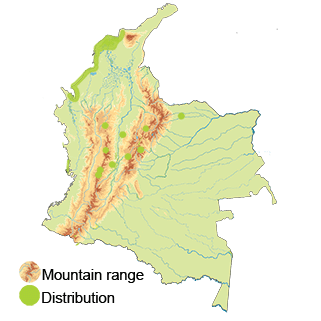Northern Shoveler
Size: The Northern Shoveler duck averages around 18 to 22 inches (45 to 56 cm) in length. They have a wingspan of approximately 26 to 30 in (65 to 76 cm) and weigh between 1.2 to 2 lb (550 to 900 g).
Habitat: These ducks can be found in a variety of wetland habitats such as marshes, shallow lakes, ponds, and flooded fields. They are migratory birds and breed in the northern parts of their range, including Alaska and Canada, and winter in more southerly regions. A visitor to the Atlantic coast and to the island of San Andres.
Behavior: Northern Shovelers are dabbling ducks, meaning they feed by tipping or upending themselves in shallow water to reach submerged vegetation. Their unique bill is perfectly adapted for this feeding behavior, allowing them to filter food from the water. They mainly consume aquatic plants, seeds, and invertebrates.
Breeding: Breeding season for Northern Shovelers occurs between April and August. During courtship, the male swims around the female, displaying his colorful plumage and performing distinctive head movements. Females construct nests in grassy or reedy areas near water bodies. They lay a clutch of around 8 to 12 eggs and incubate them for about three weeks until they hatch.
Conservation status: The Northern Shoveler is not considered threatened and is listed as "Least Concern" on the IUCN Red List.
Distribution
Magdalena River Basin: The Northern Shoveler is known to occur in wetlands and freshwater habitats along the Magdalena River, which is one of the major river systems in Colombia. This includes areas such as marshes, lakes, lagoons, and flooded fields adjacent to the river.
Ciénaga Grande de Santa Marta: This large coastal lagoon, located in the Caribbean region of Colombia, provides suitable habitat for the Northern Shoveler during its migration and wintering period. The species can be observed here from about October to March.
Other wetland areas: The Northern Shoveler has been reported in various wetland regions across Colombia, including the Amazon and Orinoco river basins, the Cauca River valley, and the Bogotá Wetlands. These wetland habitats provide favorable conditions for the species' foraging and breeding activities.
The Northern Shoveler's distribution in Colombia is primarily associated with its migratory movements rather than a year-round resident population. The species tends to breed in higher latitudes and migrates to more southern regions during the non-breeding season. As such, its presence in Colombia can vary depending on the time of the year and local environmental conditions.
Taxonomy
- Kingdom: Animalia
- Phylum: Chordata
- Class: Aves
- Order: Anseriformes
- Family: Anatidae
- Genus: Spatula
- Species: Spatula clypeata
Vocalization
Quacking: The classic quacking sound is a commonly recognized vocalization of the Northern Shoveler. It is a series of rapid and high-pitched quacks, similar to the vocalizations of other dabbling duck species. The quacking is usually produced by the females, while the males have a lower-pitched call.
Whistling: Unlike the typical quacking, the Northern Shoveler produces a soft, whistling sound during courtship displays. The whistling call is a series of short, descending notes, often made by the male as part of his breeding display to attract a mate.
Alarm Calls: When threatened or alarmed, Northern Shovelers emit vocalizations characterized by short, sharp notes or series of quacks. These alarm calls serve to alert other nearby ducks of potential danger and help coordinate their escape.







